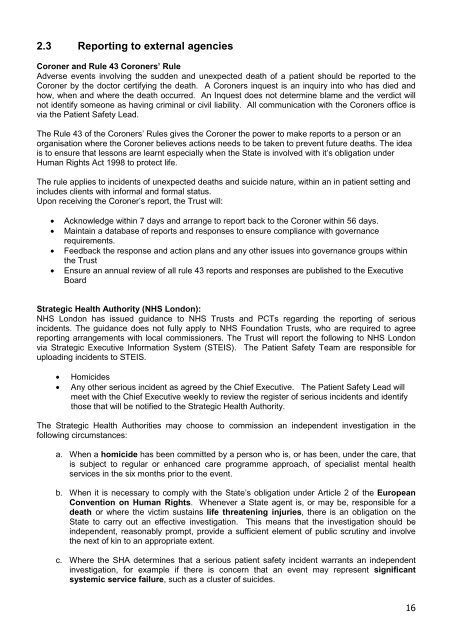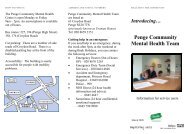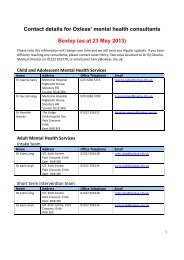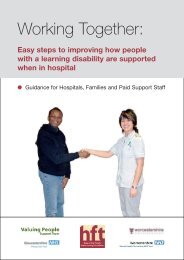Incident Management Policy and Procedure 652.0 KB - Oxleas NHS ...
Incident Management Policy and Procedure 652.0 KB - Oxleas NHS ...
Incident Management Policy and Procedure 652.0 KB - Oxleas NHS ...
You also want an ePaper? Increase the reach of your titles
YUMPU automatically turns print PDFs into web optimized ePapers that Google loves.
2.3 Reporting to external agenciesCoroner <strong>and</strong> Rule 43 Coroners’ RuleAdverse events involving the sudden <strong>and</strong> unexpected death of a patient should be reported to theCoroner by the doctor certifying the death. A Coroners inquest is an inquiry into who has died <strong>and</strong>how, when <strong>and</strong> where the death occurred. An Inquest does not determine blame <strong>and</strong> the verdict willnot identify someone as having criminal or civil liability. All communication with the Coroners office isvia the Patient Safety Lead.The Rule 43 of the Coroners’ Rules gives the Coroner the power to make reports to a person or anorganisation where the Coroner believes actions needs to be taken to prevent future deaths. The ideais to ensure that lessons are learnt especially when the State is involved with it’s obligation underHuman Rights Act 1998 to protect life.The rule applies to incidents of unexpected deaths <strong>and</strong> suicide nature, within an in patient setting <strong>and</strong>includes clients with informal <strong>and</strong> formal status.Upon receiving the Coroner’s report, the Trust will:• Acknowledge within 7 days <strong>and</strong> arrange to report back to the Coroner within 56 days.• Maintain a database of reports <strong>and</strong> responses to ensure compliance with governancerequirements.• Feedback the response <strong>and</strong> action plans <strong>and</strong> any other issues into governance groups withinthe Trust• Ensure an annual review of all rule 43 reports <strong>and</strong> responses are published to the ExecutiveBoardStrategic Health Authority (<strong>NHS</strong> London):<strong>NHS</strong> London has issued guidance to <strong>NHS</strong> Trusts <strong>and</strong> PCTs regarding the reporting of seriousincidents. The guidance does not fully apply to <strong>NHS</strong> Foundation Trusts, who are required to agreereporting arrangements with local commissioners. The Trust will report the following to <strong>NHS</strong> Londonvia Strategic Executive Information System (STEIS). The Patient Safety Team are responsible foruploading incidents to STEIS.• Homicides• Any other serious incident as agreed by the Chief Executive. The Patient Safety Lead willmeet with the Chief Executive weekly to review the register of serious incidents <strong>and</strong> identifythose that will be notified to the Strategic Health Authority.The Strategic Health Authorities may choose to commission an independent investigation in thefollowing circumstances:a. When a homicide has been committed by a person who is, or has been, under the care, thatis subject to regular or enhanced care programme approach, of specialist mental healthservices in the six months prior to the event.b. When it is necessary to comply with the State’s obligation under Article 2 of the EuropeanConvention on Human Rights. Whenever a State agent is, or may be, responsible for adeath or where the victim sustains life threatening injuries, there is an obligation on theState to carry out an effective investigation. This means that the investigation should beindependent, reasonably prompt, provide a sufficient element of public scrutiny <strong>and</strong> involvethe next of kin to an appropriate extent.c. Where the SHA determines that a serious patient safety incident warrants an independentinvestigation, for example if there is concern that an event may represent significantsystemic service failure, such as a cluster of suicides.16

















